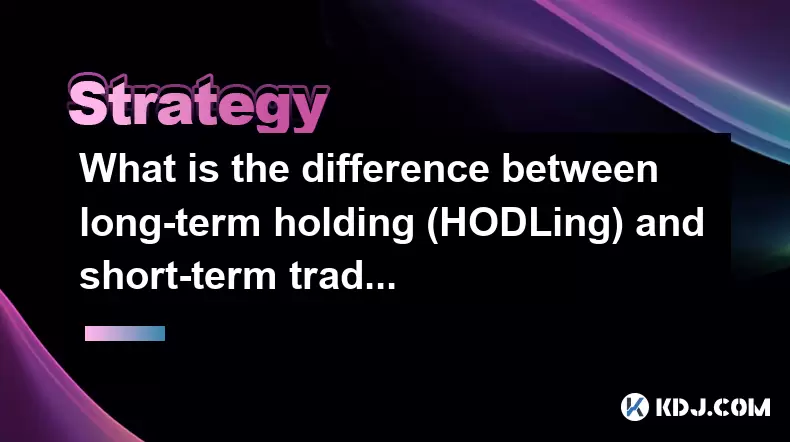-
 Bitcoin
Bitcoin $118300
0.75% -
 Ethereum
Ethereum $4544
3.21% -
 XRP
XRP $3.128
-0.31% -
 Tether USDt
Tether USDt $1.001
0.02% -
 BNB
BNB $861.4
3.94% -
 Solana
Solana $192.2
3.12% -
 USDC
USDC $1.000
0.01% -
 Dogecoin
Dogecoin $0.2332
0.92% -
 Cardano
Cardano $0.9702
6.55% -
 TRON
TRON $0.3513
-0.44% -
 Chainlink
Chainlink $24.69
14.60% -
 Hyperliquid
Hyperliquid $47.42
1.65% -
 Stellar
Stellar $0.4307
0.74% -
 Sui
Sui $3.826
3.32% -
 Bitcoin Cash
Bitcoin Cash $590.6
0.12% -
 Ethena USDe
Ethena USDe $1.001
-0.01% -
 Hedera
Hedera $0.2560
2.83% -
 Avalanche
Avalanche $24.84
4.94% -
 Litecoin
Litecoin $122.0
2.95% -
 Toncoin
Toncoin $3.493
0.20% -
 UNUS SED LEO
UNUS SED LEO $9.460
-1.09% -
 Shiba Inu
Shiba Inu $0.00001316
2.12% -
 Uniswap
Uniswap $11.19
2.94% -
 Polkadot
Polkadot $4.059
3.61% -
 Dai
Dai $1.000
0.00% -
 Bitget Token
Bitget Token $4.686
2.09% -
 Cronos
Cronos $0.1530
2.18% -
 Monero
Monero $267.4
11.83% -
 Ethena
Ethena $0.7250
0.52% -
 Pepe
Pepe $0.00001121
3.26%
What is a Bitcoin Investment Trust?
Bitcoin Investment Trusts (BITs) offer regulated and accessible exposure to Bitcoin's price movements, but investors should carefully consider factors like trust type, fees, management, and the risks associated with price volatility and regulatory uncertainty.
Jan 11, 2025 at 08:00 pm

Key Points
- Definition of a Bitcoin Investment Trust (BIT)
- Types of BITs available
- How to choose the right BIT for your needs
- Benefits and risks associated with investing in BITs
- Frequently Asked Questions (FAQs)
What is a Bitcoin Investment Trust?
A Bitcoin Investment Trust (BIT) is a publicly traded investment vehicle that provides investors with exposure to the price movements of Bitcoin without having to directly own or store the cryptocurrency themselves. BITs offer a convenient and regulated way to invest in Bitcoin, making them an attractive option for individuals and institutions looking to gain exposure to the digital asset class.
Types of BITs Available
There are two main types of BITs:
- Physical Bitcoin Trusts: These trusts own physical Bitcoin and are typically backed by audited reserves. Investors have direct exposure to the underlying asset, but they do not have to worry about the complexities of storing and securing Bitcoin themselves.
- Synthetic Bitcoin Trusts: These trusts do not hold physical Bitcoin but instead use financial instruments, such as futures contracts or swaps, to synthetically track the price of Bitcoin. They offer greater flexibility and often lower fees than physical trusts, but they also carry different risks.
How to Choose the Right BIT for Your Needs
When choosing a BIT, investors should consider the following factors:
- Type of Trust: Physical trusts offer direct exposure to Bitcoin, while synthetic trusts provide more flexibility but different risks.
- Fees: Both physical and synthetic trusts charge fees for management, accounting, and other services. Investors should compare fees before selecting a trust.
- Management Team: The management team of a BIT plays a crucial role in its performance. Investors should research the experience and track record of the team.
- Investment Strategy: Some trusts follow a passive strategy, while others actively trade Bitcoin or derivatives. Investors should choose a strategy that aligns with their risk tolerance and investment goals.
Benefits of Investing in BITs
- Diversification: BITs offer diversification for investors' portfolios by adding an uncorrelated asset class.
- Convenience: BITs provide an easy way to invest in Bitcoin without the complexities of managing private keys or storing cryptocurrencies.
- Regulation: BITs are regulated by financial authorities, which provides investors with a level of protection and oversight.
- Tax Benefits: In some jurisdictions, BITs may offer tax benefits compared to investing in Bitcoin directly.
- Accessibility: BITs are publicly traded, making them accessible to a wide range of investors.
Risks of Investing in BITs
- Price Volatility: Bitcoin is a highly volatile asset, and the prices of BITs can fluctuate significantly.
- Regulatory Risk: The cryptocurrency industry is still evolving, and the regulatory landscape for BITs may change in the future.
- Counterparty Risk: Investors in synthetic BITs are exposed to the credit risk of the counterparties involved in the financial instruments used to replicate the price of Bitcoin.
- Liquidity Risk: BITs may trade less frequently than other publicly traded securities, leading to potential liquidity issues during periods of market volatility.
- Transaction Fees: While BITs typically have lower fees than traditional investment funds, transaction fees may still apply.
FAQs
- Can I invest in BITs through my brokerage account?
Yes, many brokerage firms now offer access to BITs. - Do BITs pay dividends?
Most BITs do not pay dividends, as Bitcoin does not generate cash flow in the traditional sense. However, some active BITs may distribute gains from trading or other activities. - How do synthetic BITs replicate the price of Bitcoin?
Synthetic BITs use financial instruments, such as futures contracts or swaps, to track the performance of Bitcoin. - What are the tax implications of investing in BITs?
The tax treatment of BITs varies depending on the jurisdiction and specific characteristics of the trust. Investors should consult with a tax advisor for guidance. - What are the fees associated with BITs?
BITs typically charge fees for management, accounting, and other services. Investors should compare fees before selecting a trust.
Disclaimer:info@kdj.com
The information provided is not trading advice. kdj.com does not assume any responsibility for any investments made based on the information provided in this article. Cryptocurrencies are highly volatile and it is highly recommended that you invest with caution after thorough research!
If you believe that the content used on this website infringes your copyright, please contact us immediately (info@kdj.com) and we will delete it promptly.
- Kazakhstan's Crypto Leap: Bitcoin ETF and Central Asia's Digital Finance Future
- 2025-08-13 12:45:19
- BlockDAG Presale Blazes Past $371M: Fundraising Frenzy Fuels Crypto Sensation
- 2025-08-13 13:05:21
- Meme Coins: Chasing the 2025 Surge – Which Will Moonshot?
- 2025-08-13 10:25:23
- Bitcoin's Wild Ride: Rally, Pullback, and What's Next
- 2025-08-13 10:25:23
- Bitcoin, Bitmax, and Institutional Demand: A New Era of Crypto Investment
- 2025-08-13 10:45:12
- Solana, ROAM, and Airdrops: What's the Buzz in 2025?
- 2025-08-13 11:35:13
Related knowledge

How to use stop-loss orders to limit potential losses?
Aug 08,2025 at 02:01pm
Understanding Stop-Loss Orders in Cryptocurrency TradingA stop-loss order is a risk management tool used by traders to automatically sell a cryptocurr...

What are the most promising altcoins to invest in?
Aug 10,2025 at 11:42am
Understanding the Role of Private Keys in Cryptocurrency WalletsIn the world of cryptocurrency, private keys are the cornerstone of ownership and cont...

Should I invest in Bitcoin or altcoins?
Aug 13,2025 at 11:35am
Understanding Bitcoin and AltcoinsWhen deciding whether to invest in Bitcoin or altcoins, it's essential to first understand what each represents. Bit...

What are the most important metrics to look at when evaluating a cryptocurrency?
Aug 13,2025 at 11:36am
Market Capitalization: Understanding the Total ValueWhen evaluating a cryptocurrency, market capitalization is one of the most foundational metrics. T...

How to read cryptocurrency charts and use technical analysis?
Aug 08,2025 at 11:08am
Understanding the Basics of Cryptocurrency ChartsCryptocurrency charts are graphical representations of price movements over time. These charts are es...

What is the difference between long-term holding (HODLing) and short-term trading?
Aug 10,2025 at 05:30pm
Understanding HODLing in the Cryptocurrency SpaceThe term HODL originated from a typo in a 2013 Bitcoin forum post and has since become a widely accep...

How to use stop-loss orders to limit potential losses?
Aug 08,2025 at 02:01pm
Understanding Stop-Loss Orders in Cryptocurrency TradingA stop-loss order is a risk management tool used by traders to automatically sell a cryptocurr...

What are the most promising altcoins to invest in?
Aug 10,2025 at 11:42am
Understanding the Role of Private Keys in Cryptocurrency WalletsIn the world of cryptocurrency, private keys are the cornerstone of ownership and cont...

Should I invest in Bitcoin or altcoins?
Aug 13,2025 at 11:35am
Understanding Bitcoin and AltcoinsWhen deciding whether to invest in Bitcoin or altcoins, it's essential to first understand what each represents. Bit...

What are the most important metrics to look at when evaluating a cryptocurrency?
Aug 13,2025 at 11:36am
Market Capitalization: Understanding the Total ValueWhen evaluating a cryptocurrency, market capitalization is one of the most foundational metrics. T...

How to read cryptocurrency charts and use technical analysis?
Aug 08,2025 at 11:08am
Understanding the Basics of Cryptocurrency ChartsCryptocurrency charts are graphical representations of price movements over time. These charts are es...

What is the difference between long-term holding (HODLing) and short-term trading?
Aug 10,2025 at 05:30pm
Understanding HODLing in the Cryptocurrency SpaceThe term HODL originated from a typo in a 2013 Bitcoin forum post and has since become a widely accep...
See all articles

























































































